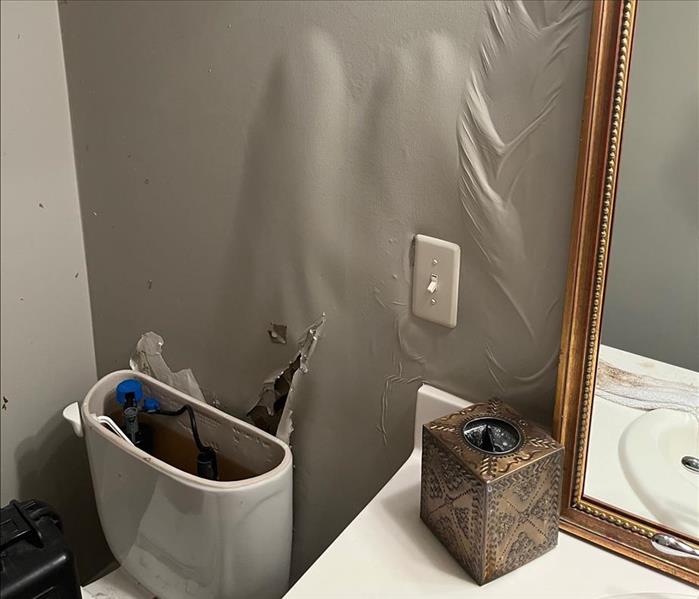Does the Source of Flood Water Matter?
5/7/2024 (Permalink)
 Wall damaged by broken toilet supply line. The source was clean water, so it was determined to be Category I.
Wall damaged by broken toilet supply line. The source was clean water, so it was determined to be Category I.
Flooding wreaks havoc on homes and commercial properties, leaving behind a trail of destruction that's often difficult to fully anticipate.
The initial step in mitigating water and storm-related damages is water extraction, but that's only the beginning of the comprehensive restoration process undertaken by the restoration professionals from SERVPRO of Northeast Dallas. Given the inherent dangers of flooding, it's crucial to enlist the expertise of a reputable property damage restoration company like ours, specializing in natural disaster and flood cleanup and remediation.
For property owners or management teams, determining whether contaminated areas and contents have been effectively remediated can be challenging, necessitating professional intervention to prevent ongoing damage from potential mold growth. Our restoration technicians, equipped with IICRC training and certification and extensive experience in local property damage cleanups and repairs, assess the damage meticulously.
During the assessment process, SERVPRO of Northeast Dallas identifies which aspects of the loss can be cleaned, sanitized, and restored, collaborating seamlessly with our construction crews and management to facilitate a smooth transition from mitigation to reconstruction. Thus, entrusting the restoration process to a local property disaster restoration company like ours ensures comprehensive and efficient damage reversal.
When it comes to contaminated water, understanding the different categories is crucial:
Category 1: Originating from an uncontaminated source of clean water, such as a broken water supply line or a leaking hot water heater, Category 1 water poses minimal risk initially but may become contaminated upon contact with other surfaces or materials. We always attempt to dry surfaces as quickly as possible to prevent additional damage and avoid the need for demolition.
Category 2: Often called "gray water", it carries slight contamination that can cause discomfort or illness if consumed or contacted by humans. One example would be water that leaks from a dishwasher drain line. This type of water may contain unsafe levels of microorganisms, nutrients, or other organic or inorganic matter. Depending on the situation, some surfaces can be disinfected, cleaned, and dried, while others will need to be removed.
Category 3: Known as "black water", it is highly contaminated and harbors pathogenic, toxigenic, or otherwise harmful agents. This category includes sewage backups, ground water, or surfaces that have remained wet for over five days. Dealing with black water requires professional expertise due to its hazardous nature. Most surfaces that come into contact with Category 3/Black Water must be removed.
Different categories of contaminated water present varying risks, but prolonged exposure exacerbates property damage and health hazards.
If you are dealing with any type of flood, contact SERVPRO of Northeast Dallas as soon as possible.



 24/7 Emergency Service
24/7 Emergency Service